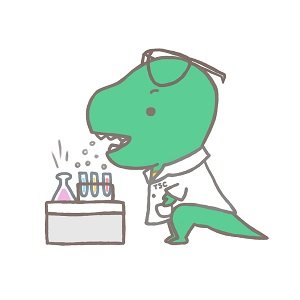It’s that time of the year again when longer days and warm sunshine beckon us outdoors. Promising progress of COVID-19 vaccine rollouts has led to the palpable hope that this summer will not be like the last, spent physically isolated indoors or in our backyards. But if you’re heading outside to enjoy the sun in the coming months, don’t forget some sunscreen to protect yourself from a different—but no less harmful—health risk: exposure to UV radiation.
The consequence of sun exposure causing poor skin health has been known for some time. Ancient Egyptians applied extracts of rice bran, jasmine, and lupine on their skin to maintain their fair complexion1, whilst in Myanmar, a traditional paste made from the ground bark of the Thanaka tree is commonly used as a natural sunscreen even today2. More recently, studies show that even daily, incidental exposure to sunlight accumulates over time to cause premature skin aging and increased risk of developing skin cancers3.
Why We Need Protection from Sunlight
Thanks to science, we now know that ultraviolet (UV) rays in sunlight are the main cause of sun damage to the skin. Shorter wavelengths of light possess higher energy, which is what makes ionizing radiation (X-rays and gamma rays) so dangerous. UV light is a type of radiation with wavelengths shorter than visible light, but longer than X-rays. Since UV rays carry higher energy than visible light, they are capable of interacting with molecules in our cells and can even alter the structure of our DNA4.

Two Types of Ultraviolet: UV-A and UV-B
Ultraviolet (UV) light can be divided into two categories based on its wavelengths, UV-A and UV-B. UV-A rays (320-400 nm) have just a tiny bit more energy than blue visible light but less than UV-B. UV-A rays are able to penetrate the outermost layer of our skin (the epidermis) to reach the second layer called the dermis, where it is absorbed by collagen and elastin fibers responsible for the strength and elasticity of the skin. UV-A irradiation has been found to result in shorter, disorganized elastin fibers, which is thought to contribute to the accelerated appearance of wrinkles and other visible signs of aging5.
UV-B rays (280-320 nm) on the other hand are almost completely absorbed by the epidermis and are rarely able to reach other skin layers. However, the shorter wavelength of UV-B rays means it carries more energy than UV-A rays. This makes UV-B capable of severe damage to cells, such as promoting the formation of reactive free radicals and causing mutations in DNA.

Skin Damage from UV Exposure
Oxygen and DNA molecules can absorb UV light, causing them to gain energy and transition to an excited state. Once excited, they become extremely reactive and interact with neighboring molecules, thus interfering with their function.
For instance, the absorption of UV-B commonly leads to the formation of pyrimidine dimers within the DNA structure, increasing the likelihood of mutations happening. This accumulation of cancer-causing mutations has been implicated in different types of skin cancer.
Sunburn and tanning, once seen as desirable effects in some cultures, are now widely recognized as reactions to the damage caused by UV light. Chemicals released by damaged or dying skin cells elicit an inflammatory response responsible for the redness, heat and pain of a sunburn, and dead skin subsequently peels off in layers.
UV light also triggers specialized skin cells called melanocytes into producing melanin. Melanin is a brown pigment responsible for the darkening of skin tone, or tanning, after prolonged exposure to sunlight. Its UV-absorbing properties also make it a natural sunscreen capable of reducing damage from future exposure to UV radiation.
However, as even the ancient Egyptians knew, our natural defenses alone are unable to completely protect us against sun damage. Today, dermatologists strongly recommend that everyone, regardless of skin tone, use sun protection.
How Sunscreen Protects our Skin
Fortunately, scientists have found an effective method of protecting our skin from sun damage using molecules that absorb UV light. These molecules are called UV filters and prevent damage by ‘soaking up’ UV rays before they reach the proteins and DNA in our skin. Sunscreen that we buy today contains molecules that effectively protect us against sun damage. Zinc oxide, titanium dioxide, oxybenzone, and octocrylene are some of the more common filters that you might see listed on the back of a sunscreen bottle.
UV Filters – Molecules with Special Structures
The key to how UV filters work lies in their electron transitions. All chemicals have electrons, which exist at different energy levels. UV filters are molecules with special chemical structures, allowing their electrons to transition to a higher energy level when hit with certain wavelengths of UV light in a process called excitation.
But what goes up must also come down! An electron that has absorbed this extra energy becomes unstable and will eventually release the same amount of energy to move back down to its original energy level. This process is known as relaxation.
However, rather than becoming reactive and damaging neighboring molecules, UV filters typically release the excess energy in a different form than it was absorbed. For instance, energy may be released as vibrations or infrared radiation, which generate small amounts of heat, or by reversibly breaking chemical bonds within the molecule.
In either case, these forms of energy are harmless to our skin. Through repeated cycles of excitation and relaxation, UV filters absorb UV light before it reaches the skin and releases the energy in other forms, thus preventing skin damage.

Organic Vs. Inorganic UV Filters
Where individual UV filters differ is in the exact wavelengths of light absorbed and types of energy released. Inorganic UV filters such as zinc oxide and titanium dioxide have a broader absorbance spectrum than organic filters, making them more effective at blocking out UV-A rays in addition to UV-B rays6. In contrast, organic UV filters such as oxybenzone and octocrylene tend to absorb very specific wavelengths that fall in the UV-B range.
A common misconception is that inorganic filters (sometimes called physical or mineral sunscreens) act primarily by reflecting rather than absorbing UV light, but this has been debunked by a study showing that reflection accounts for only a small percentage of UV protection7.
They do however reflect visible light very well, which is why sunscreens with zinc oxide or titanium dioxide tend to leave a white residue after application. This isn’t a problem for organic UV filters, which are not as good reflectors of visible light. Most sunscreens, therefore, have a mixture of different UV filters (both organic and inorganic) to provide broad-spectrum protection whilst reducing the drawbacks of individual UV filters.
In 2020, the U.S Food and Drug Administration (FDA) released two studies showing that several chemical UV filters could be absorbed through the skin into the bloodstream and persist for several days after application8,9. However, both studies did not record many serious adverse effects, the most common being a rash which developed in several participants.
This led the FDA to issue a precautionary statement saying that the public should continue to use approved sunscreens whilst the industry gathers more data on the absorption of chemical sunscreens. Importantly, zinc oxide and titanium dioxide were not found to be absorbed and are classified by the FDA as generally safe and effective. There are currently 16 active ingredients approved for use in sunscreens marketed in the U.S.
Staying Sun-Safe This Summer
Research has shown that the daily application of even low SPF (4-10) sunscreens can significantly reduce a person’s lifetime UV exposure3. SPF, or Sun Protection Factor, is a measure of how well a sunscreen protects against UV-B rays but doesn’t take into account how well UV-A rays are blocked. Hence, it is important to check if a sunscreen contains a broad spectrum UV filter that is capable of protecting against both types of UV light.
Applying sunscreen in sufficient amounts and at regular intervals is key to reaping its benefits. Experts recommend a shot glass worth of sunscreen is needed to adequately cover the entire body, and that sunscreen should be reapplied every 2 hours.
If that sounds like too much of a hassle, there are also other items like clothing, hats and umbrellas that can serve to reduce UV exposure. Special UV protective clothing is also available for a range of sports and outdoor applications. Hopefully, with a little effort, we can all enjoy spending time in the sun without suffering the negative consequences!
This article was written by Shan Chong via Write For Us.
Reference
1. The history of sunscreen. (2013) J. Am. Acad. Dermatol. 68, AB34.
2. Goldsberry, A., Dinner, A. & Hanke, C. W. (2014) Thanaka: traditional Burmese sun protection. J. Drugs Dermatol. 13, 306–307.
3. Nole, G. & Johnson, A. W. (2004) An analysis of cumulative lifetime solar ultraviolet radiation exposure and the benefits of daily sun protection. Dermatol. Ther. 17 Suppl 1, 57–62 .
4. Goodsell, D. S. (2001) The molecular perspective: ultraviolet light and pyrimidine dimers. Oncologist 6, 298–299 .
5. Dhital, B. et al. (2017) Ultraviolet radiation reduces desmosine cross-links in elastin. Biochem Biophys Rep 10, 172–177 .
6. Dransfield, G. P. Inorganic Sunscreens. Radiat. Prot. Dosimetry 91, 271–273 (2000).
7. Cole, C., Shyr, T. & Ou-Yang, H. Metal oxide sunscreens protect skin by absorption, not by reflection or scattering. Photodermatol. Photoimmunol. Photomed. 32, (2016).
8. Matta, M. K. et al. (2019) Effect of Sunscreen Application Under Maximal Use Conditions on Plasma Concentration of Sunscreen Active Ingredients: A Randomized Clinical Trial. JAMA 321, 2082–2091.
9. Matta, M. K. et al. (2020) Effect of Sunscreen Application on Plasma Concentration of Sunscreen Active Ingredients: A Randomized Clinical Trial. JAMA 323, 256–267.
About the Author

This article was written by a contributor. For a full list of guest writers, click here.




